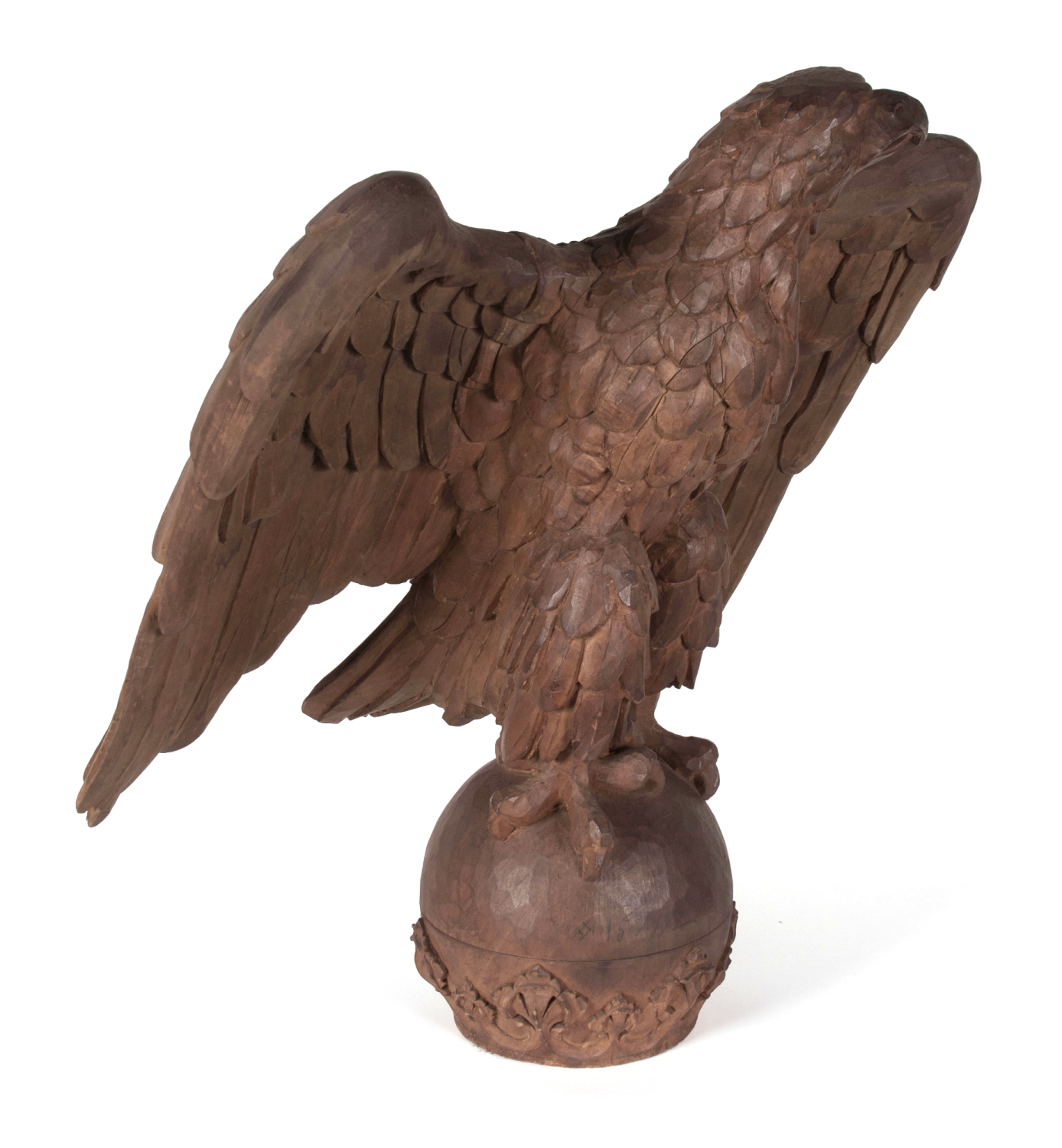
| |
LATE 19TH CENTURY PILOT HOUSE EAGLE, FOUND IN WISCONSIN, FINISHED BY THE CARVER BUT NEVER SOLD, ca 1880 |
| |
|
| Dimensions (inches): |
25.5" tall x 23" w x 15" d |
| Description: |
|
This beautifully carved, softwood, pilot house eagle, found in Wisconsin, was probably made by a carver that fashioned eagles for boats that navigated the Mississippi River. Never painted, as a softwood carving definitely would have been, to protect it from the elements, it was actually discovered with wooden posts still attached that allowed it to be spun on a lathe-like apparatus. This provided the carver with the ability to turn it 360 degrees as he or she worked. One of these protruded from the center of the back, in a predictable location. Two others, much smaller in diameter, extended from the elbows of the wings, at their highest point, oriented so as to be parallel to the larger one. All three were mortised into the carving.
Very interesting from an academic perspective, but not especially attractive, I trimmed the center post so that approx.. 1” remains present, and trimmed the others to the wings, shaping them accordingly and blending them into the surface, so that their former location was not apparent.
Wonderfully proportioned and fairly large in scale, the carving was designed so that the wings could be removed, probably for ease in shipping. These are pinned with wooden dowels. Every bit of the work is very nicely done, with wonderful treatment of the feathers and great dimension. Note the beautifully designed, floral carvings that adorn the base of the large wooden sphere, on which the eagle is perched, which is especially unusual in my experience. Also note that the ball wasn’t turned, but rather chip-carved, resulting in multifaceted surface that, in combination with its color, loosely resembles hammered copper. The surface displays a beautiful, golden brown oxidation, much of its patina likely acquired while sitting for years in the shop of the carver, the identity of whom is sadly unknown. This is typical of carved, American eagles. Very few makers signed their work, and not enough research has been completed that allows attribution to more than a tiny handful of names. An inventory number was at some point penciled on the face of the ball, probably by the sculptor.
All-in-all, a very attractive example of a three-dimensional, Pilot House eagle, with great scale and presentation.
Display: Though it does stand freely with reasonable stability, a metal base is being made to better stabilize the carving. While meant to stand on a flat surface, I suggest a triangular wall wedge to allow it to be displayed high up on against a flat surface. We can have this constructed for you if so desired.
Condition: In addition to the removal of the maker’s pins and blending of them into the wings, described above, a chip of the eagle’s proper right wing is missing at its bottommost point. |
|
|
| |
|
| Primary Color: |
brown |
|
| Earliest Date: |
1870 |
|
| Latest Date: |
1890 |
|
| For Sale Status: |
Sold |
|
| Price |
SOLD |
|
| E-mail: |
info@jeffbridgman.com |
|
 |
|
Page Views:... 127 |
|


